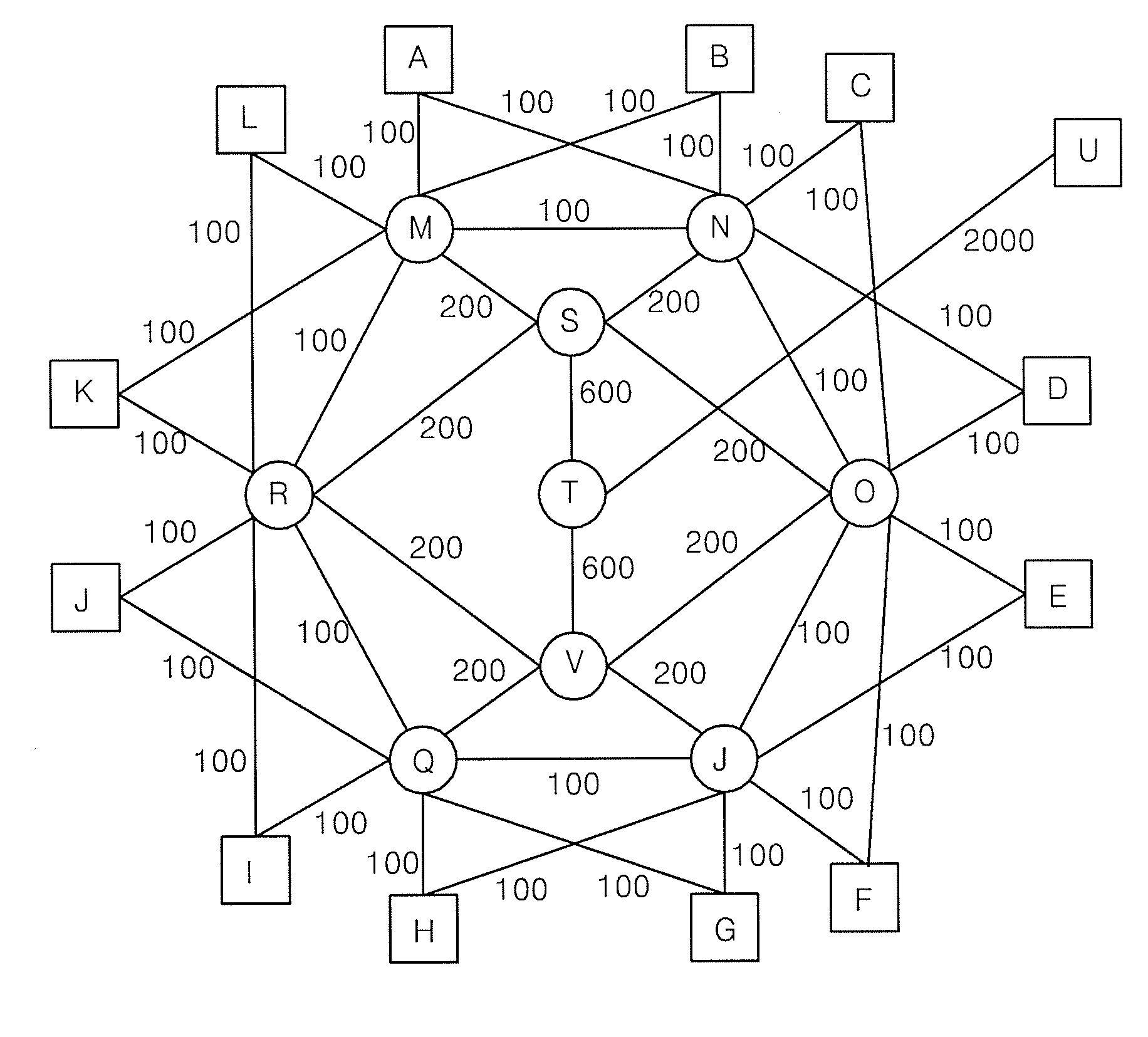Node device and method for deciding shortest path using spanning tree
a node device and a spanning tree technology, applied in the direction of electrical equipment, digital transmission, data switching networks, etc., can solve the problems of large packet loss, easy interworking problems, small throughput, etc., and achieve the effect of reducing the re-configuration delay in which the use of the node device is inhibited, excellent throughput, and transmission delay
- Summary
- Abstract
- Description
- Claims
- Application Information
AI Technical Summary
Benefits of technology
Problems solved by technology
Method used
Image
Examples
Embodiment Construction
[0037]Hereinafter, the present invention will be described in detail by explaining exemplary embodiments of the invention with reference to the attached drawings.
[0038]Backbone networks have the following characteristics. First, networks are very regular. Second, an edge node has multiple links to reach a core network for guaranteeing reliability.
[0039]Based on the above-mentioned two characteristics, the present invention proposes a routing algorithm that uses multiple end-to-end paths simultaneously. Layer-2 routing protocol includes a plurality of spanning trees and has a single routing path between two end nodes for a given flow. If single path limitation is alleviated, a better routing path can be used in consideration of a status of network. Routing scheme that is proposed according to the present invention is Edge Node Divided Spanning Tree (ENDIST) that enhances transmission ability of spanning trees.
[0040]The present invention operates as follows. First, as many paths that ...
PUM
 Login to View More
Login to View More Abstract
Description
Claims
Application Information
 Login to View More
Login to View More - R&D
- Intellectual Property
- Life Sciences
- Materials
- Tech Scout
- Unparalleled Data Quality
- Higher Quality Content
- 60% Fewer Hallucinations
Browse by: Latest US Patents, China's latest patents, Technical Efficacy Thesaurus, Application Domain, Technology Topic, Popular Technical Reports.
© 2025 PatSnap. All rights reserved.Legal|Privacy policy|Modern Slavery Act Transparency Statement|Sitemap|About US| Contact US: help@patsnap.com



